Welcome to Blind Spots in a Car (& Shoulder Checks)
What are blind spots in a car? Blind spots are simply specific areas that you can not see when you are sitting in the driver’s seat. You can’t see this area in your mirrors or in the corner of your eye(s). The only way to see the blind spot is to shoulder-check.
Another road user could be right beside your vehicle, and you wouldn’t be able to see it at all. Obviously, this is potentially dangerous.
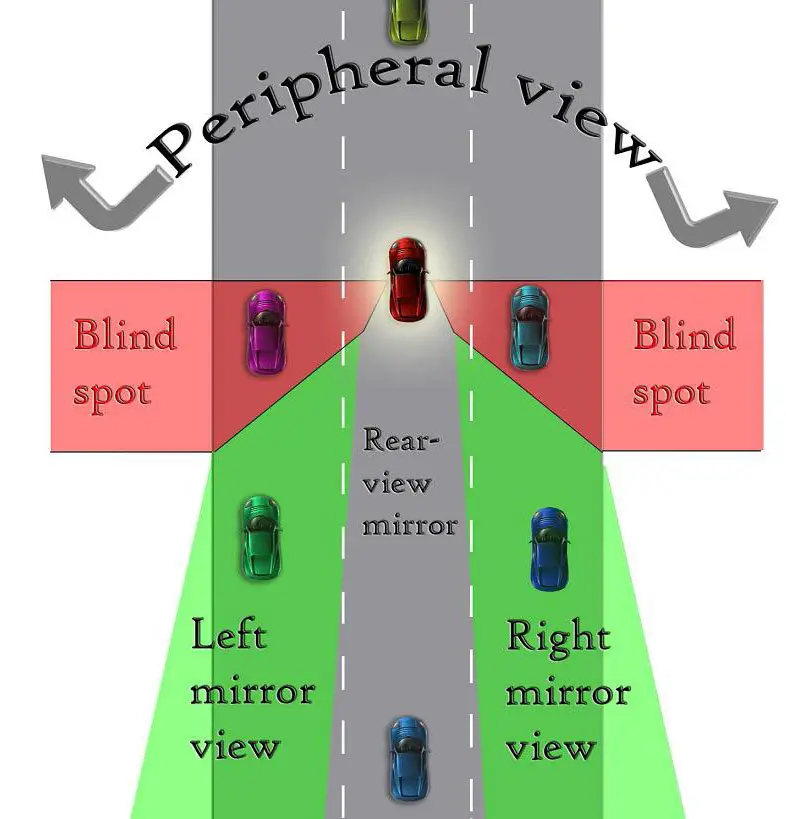
Blind Spots in a Car While Driving
Let’s dig deeper. Let’s take the following photo of a driver’s point-of-view as an example. In the rear-view mirror, not much is happening. We can see a silver car in front, a black truck, a red Porsche, and nothing in the left-side mirror, correct?
Does anyone see the driveway to the underground parking lot?
there could be a car about to turn to their left…

How about now?
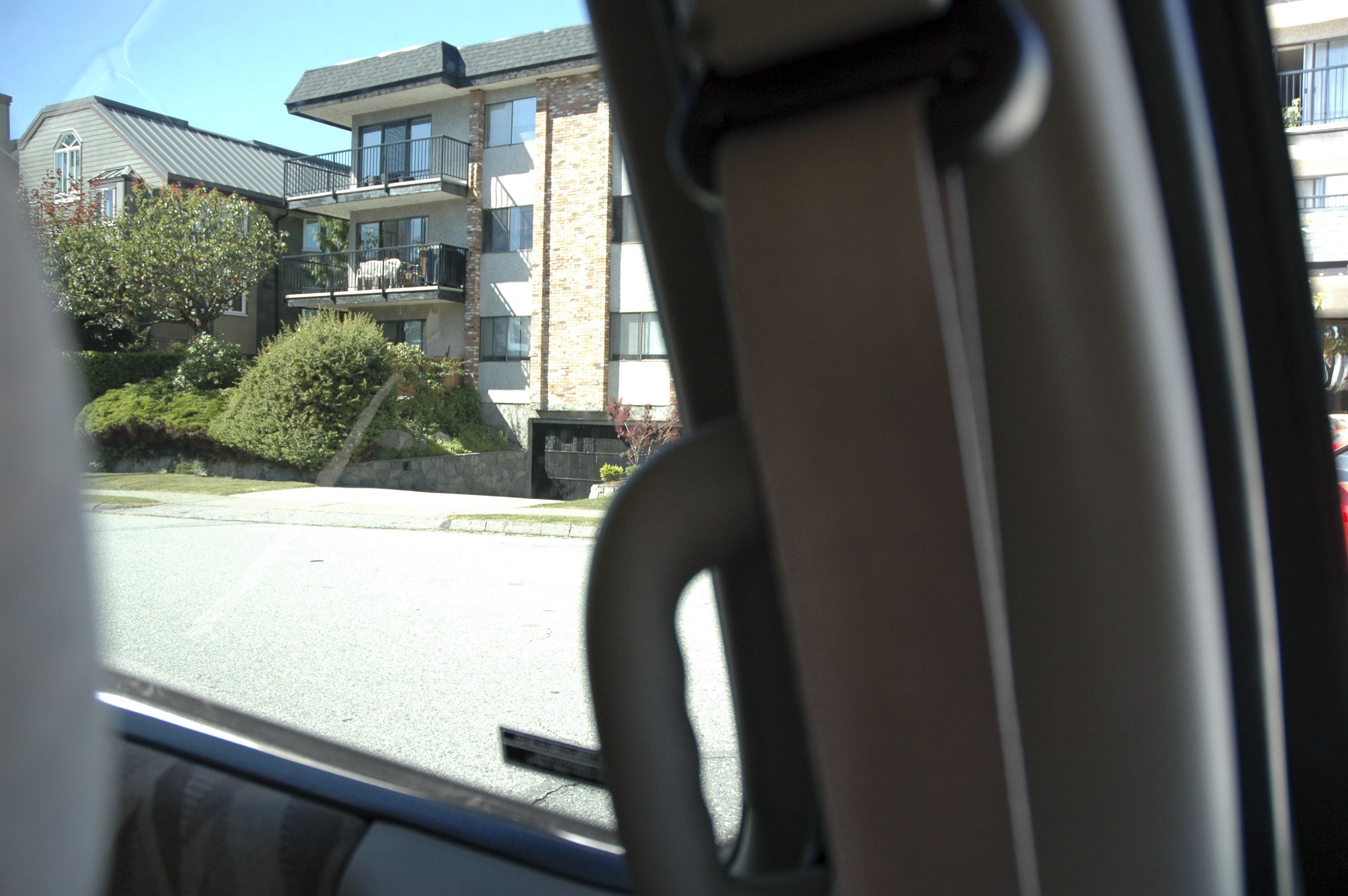
Shoulder Check Technique
Generally, to do a shoulder check, a driver should peak over the left or right shoulder (whichever direction the vehicle is about to be moved) out the back-side window; although this may vary slightly with different vehicles, such as a convertible with the top up.
Do what you need to do to ensure you can ‘check’ the blind spot area.
Typical situations drivers should shoulder check include
- Before pulling over to the side of the road (You are driving down the road and you want to pull over and stop beside the edge of the curb).
- Before pulling into the road (as pictured above). I.e. you are parked beside the curb and you are about to drive away.
- You need one before lane changing
- Just before merging onto a freeway/highway
- When you’re turning right (sometimes left as well) at intersections
- When reversing, you need a 360 check, which includes a couple of shoulder checks, before
- For a U-turn, 2-point, or 3-point turn
- Just before you go into a turning lane
- Anytime before you will be moving over more than 1 meter.
Does anyone see the dark minivan in this picture?
This is what I see without doing a shoulder check.

How about now?
This is what I see when I do my ‘shoulder check.’
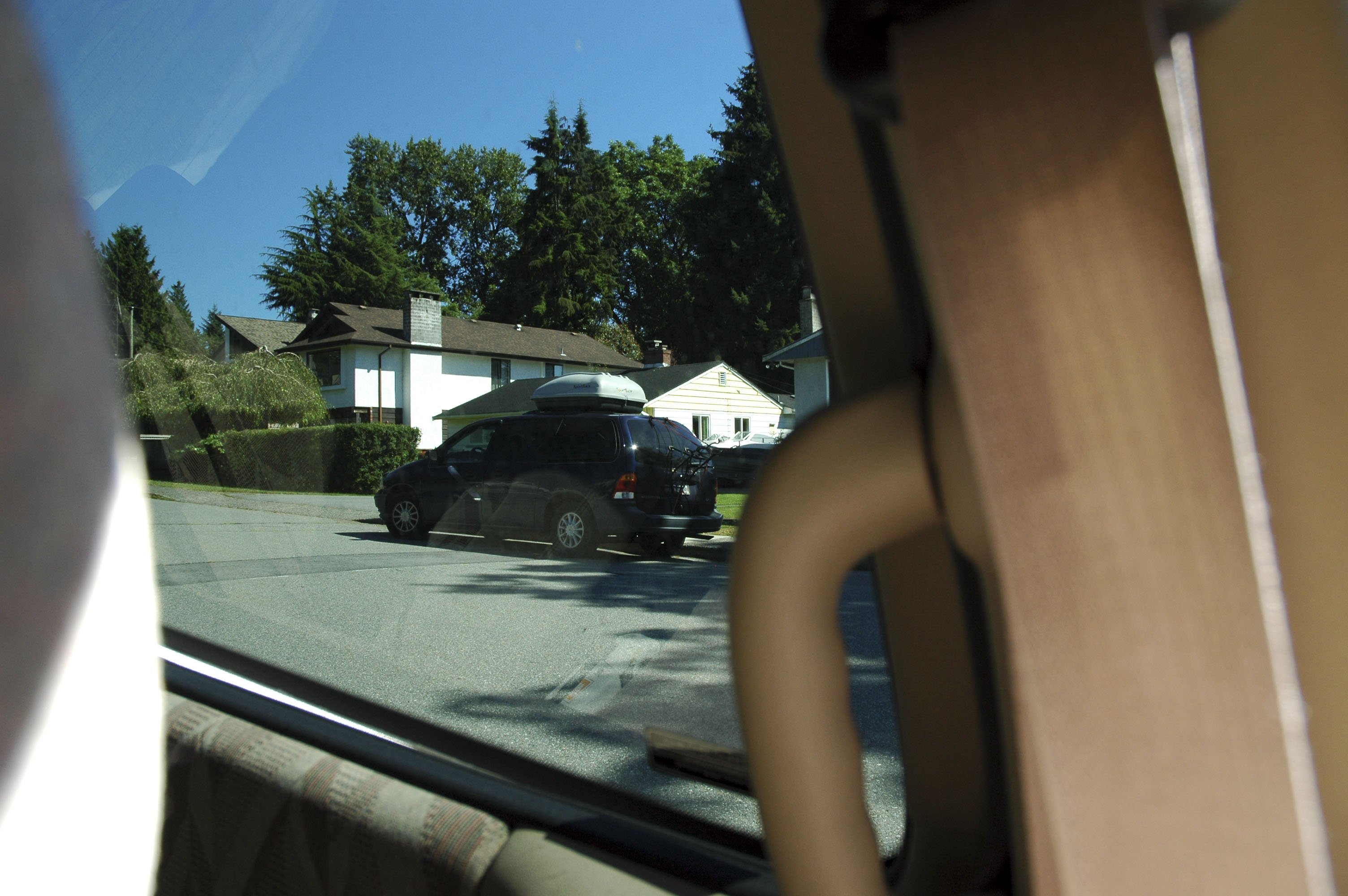
Right Turn Shoulder Checks – So Important
With ever-increasing cyclist and pedestrian traffic on public roads, knowing when and where to do left and right turn shoulder checks is a vital observation skill, especially when turning right.
A proper shoulder check involves moving your head 90 degrees and shifting your eyes out the back right or back left window. Or whatever you have to do to see into your blind spot.
You should never have to take your shoulders off the back of the seat in order to shoulder check properly. You should also not be looking out the very back windshield (The rear-view mirror will show what is directly behind your vehicle).
Right Turn Shoulder Checks Example 1
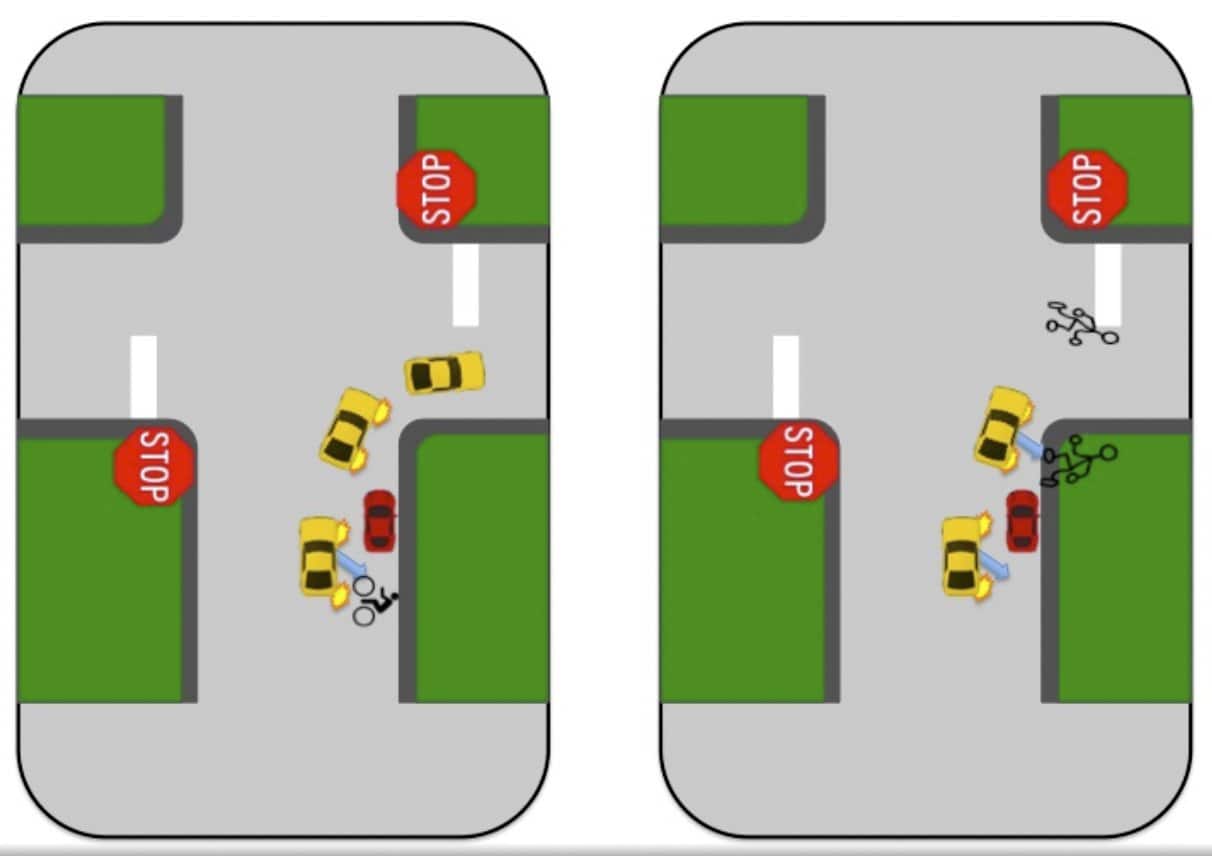
Example 1 shows a typical driving example of turning right without a stop sign. If you find yourself needing to move over to position yourself for a proper right turn, make sure your shoulder checks to the right to ensure you don’t cut off any cyclists, especially when there is a parked car along the curb.
If there is a cyclist in your blind spot then allow them to pass before making your right turn.
After you check your blind spot, if there are no cyclists or pedestrians, simply take the turn. There is no need to shoulder check again because you would have checked the crosswalks on approach to the intersection for anyone crossing the street.
However, if you have to stop for any reason after you have moved over to the right, whether it be for pedestrians or maybe a left-turning vehicle that went before their turn, shoulder check again towards the sidewalk behind you for any last-minute pedestrians.
Right Turn Shoulder Checks Example 2
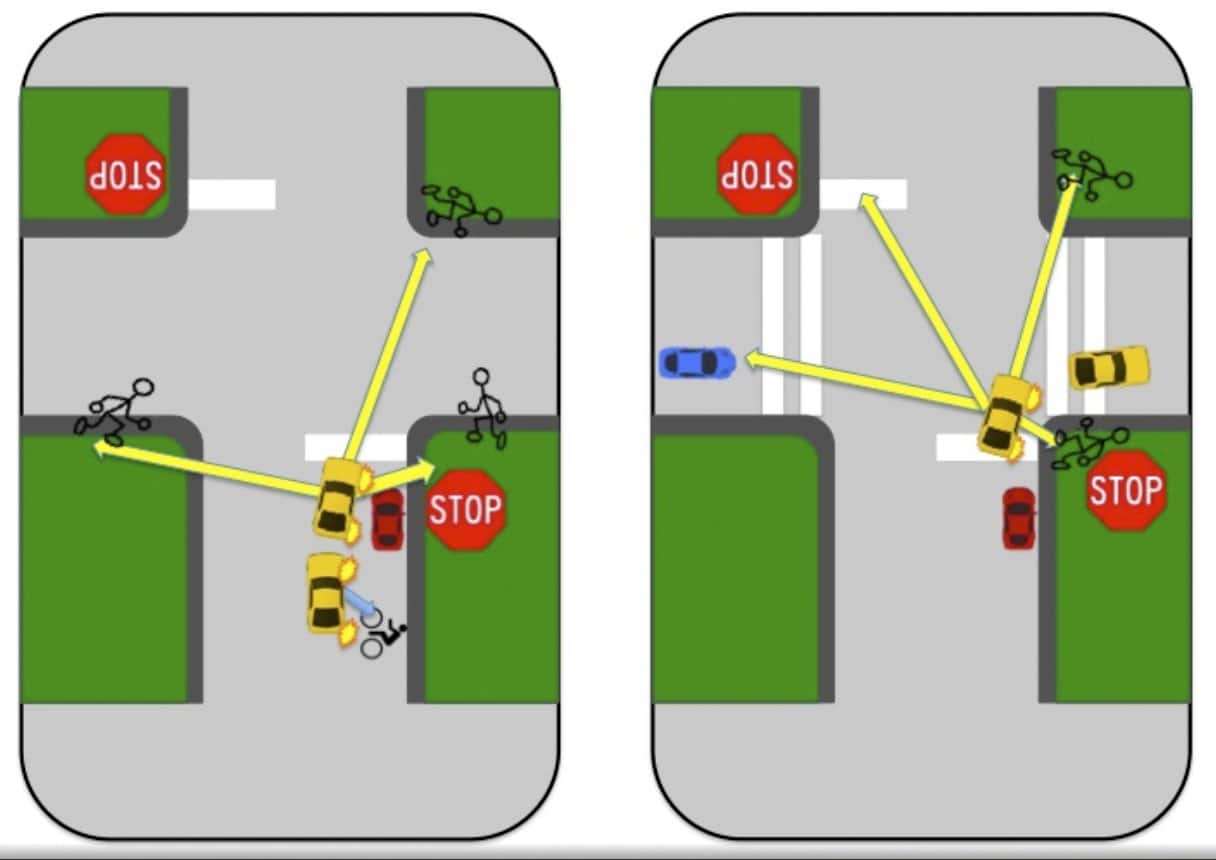
Example 2 Shows a typical right turn at a 2 way stop. Follow the same procedure from Example 1 if you have to move the vehicle over for any reason.
Once at the 2 way stop you will have to shoulder at least once more before you go when it is safe. While stopped at the stop sign, scan the crosswalks for any pedestrians wishing to cross the street. Also, check for visibility to the left for traffic.
If visibility is poor inch out into the intersection and stops again. By stopping again you’ve made a conscious choice to yield to any cars coming from the left and also any pedestrians in your blind spot. If you continue to roll ahead while checking left and shoulder checking a mistake will occur at some point. What if there is someone coming? Make sure you stop again.
Once you’ve stopped again scan the intersection for traffic and pedestrians. If there is a long line of traffic locate your safe gap. Keep updating the traffic scene to the right to make sure it will still be safe by the time you’re ready to go.
Once you’ve found your gap, shoulder check right, then check back to the left again to make sure nobody has closed the gap on you. If it is not safe, repeat the scanning process. If it is safe, shoulder-check right, check left again, then go ahead!
Make sure you anticipate the driving scene well ahead and always ask yourself if you need to move over or if you have to stop for any reason. Not all intersections are created equal and you’ll find that in a lot of situations you will not have to move over more than a meter or stop again.
In that case, there should be no need to shoulder check as long as you are looking towards the sidewalks and crosswalks. Make sure you also check your mirrors before turning. Checking your mirrors along with proper shoulder checks will ensure your right turns are consistently 100% safe.
Blind Spot Science Fair Project
Blind Spot? What Blind Spot?
This is Alaina Gassler’s Science and Engineering Fair project in 2019.
She completed this as an 8th grader at Avon Grove Charter School in West Grove, PA.
Abstract: Many car accidents are caused by drivers not being able to see hazards due to blind spots. My prototype is designed to get rid of those blind spots by displaying an image of the area behind them onto the spot. I used a small projector as the displaying device and a webcam as the recording device. The webcam is mounted onto the outside of the car, and the projector displays the image only the A-pillar of the car. To help the image become brighter and clearer, I used a reflective fabric that reflects the picture only to the driver. This prototype has the potential to greatly reduce blind spot related car accidents.
Shoulder Check Before Entering a Turning Lane
Generally, this is a good idea as entering a turning lane is somewhat similar to a lane change and so all of the necessary precautions for lane changing should naturally apply.
If you are checking your mirrors frequently you may question the need to throw in a shoulder check and you may have a point, but there is nothing like being 120% certain that it is a safe movement and there is no way to take back a collision once it has happened.
Consider individual situations. For example, do you really need a left shoulder check before entering this left-turning lane?
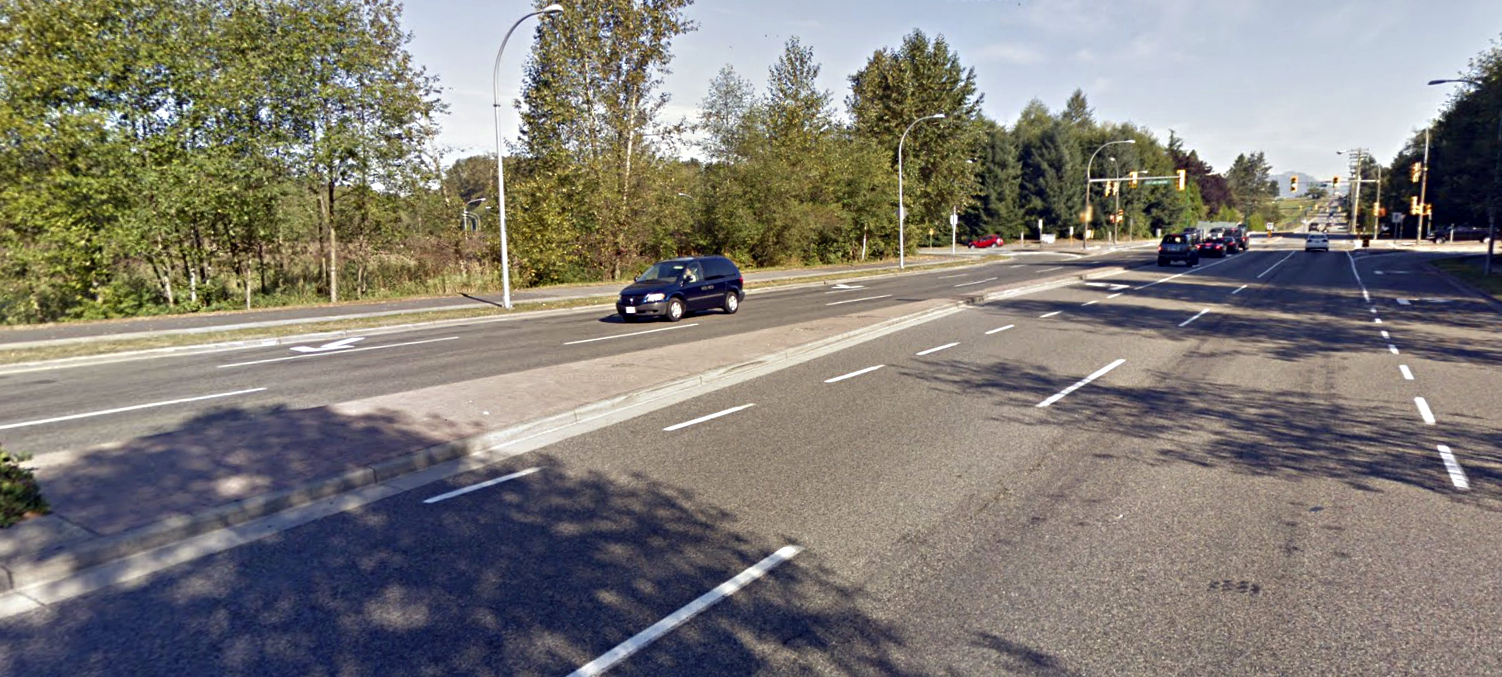
Is any vehicle going to be ‘sneaking up’ behind you on your left side (i.e. driving over the concrete) to enter the turn lane before you (or behind you, beside you, whatever)? I don’t think so? I have seen Ford F350s and Hummers drive over these types of things from time to time. But you will surely notice a Hummer in your mirror would you not? Anyone who doesn’t shouldn’t be driving.
It is much more important to shoulder check when going into a turning lane that looks more like this.
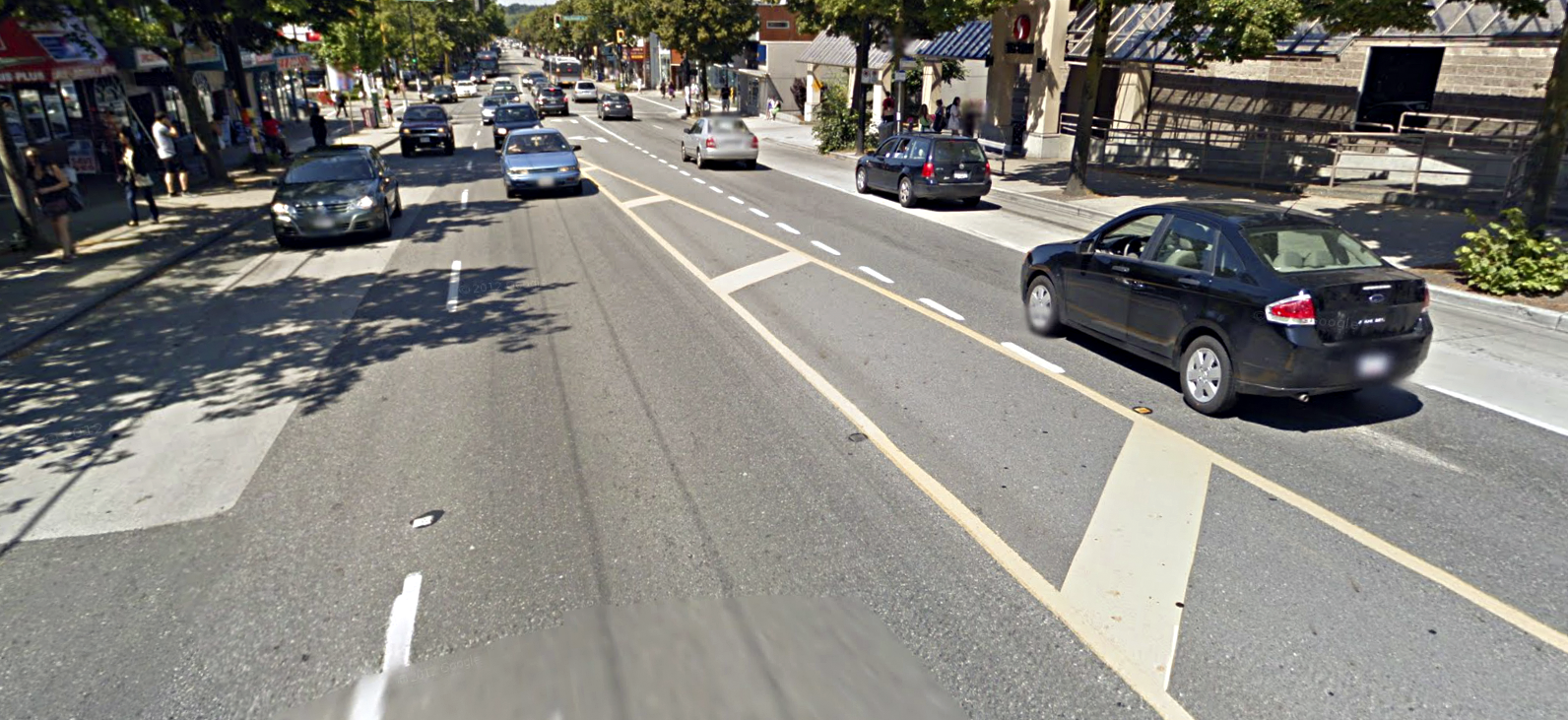
Drivers are not really supposed to drive over these yellow-painted lines, but they sometimes do anyway. Another thing you may not think about is vehicles not behind you, but from the side, potentially planning a left turn from a parking lot or driveway into the same space as you. In these instances, it is a good habit to shoulder check. Just do it. It doesn’t hurt, does it?
In terms of right-turning lanes – Yes it is a good idea as there may be bicycles, among other road users to check for.
Remember, always shoulder-check before you move; not at the same time.
Do you need to do left shoulder checks every time before you turn left? It’s a question we get here a lot. The short answer is maybe. Normally you need to do right shoulder checks for right turns but not necessarily left shoulder checks before left turns. And let me just say that driving instructors everywhere don’t agree on the answer to this question, so take everything here with a grain of salt.
When you turn right, there are crosswalks and other areas where there may be bikes and pedestrians to the right of you, that may be hiding in your blind spot.
Right shoulder checks are essential before turning right to ensure it is safe for pedestrians and cyclists. There could be a number of different road users in your blind spot area. Can we say the same thing about left turns, and left shoulder checks?
Right Shoulder Checks for Right turns
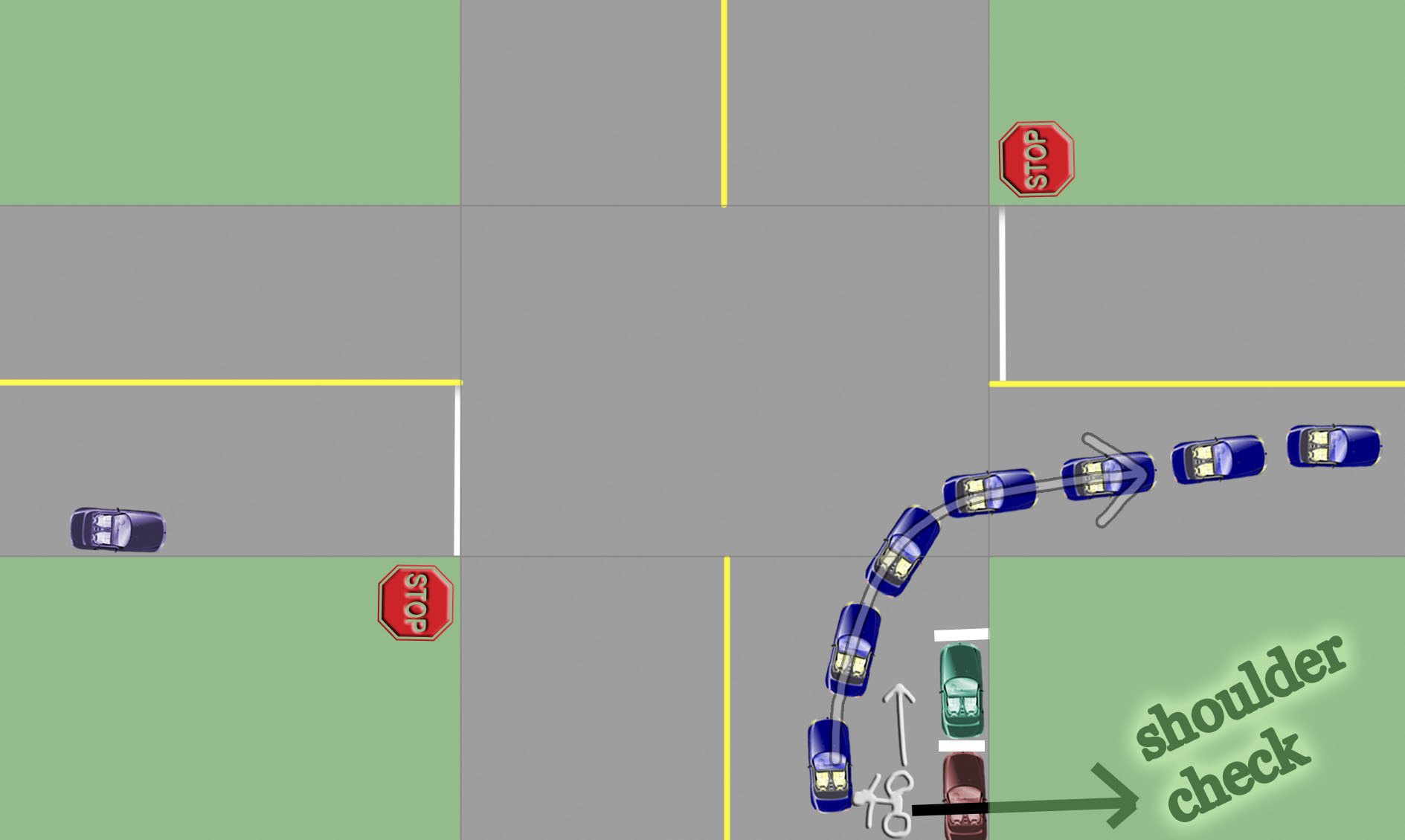
When you turn left, what’s in your left blind spot? Isn’t it normally just the wrong side of the road, i.e. cars traveling in the opposite direction…?
Normally you can simply look out your driver’s side window and check the pedestrian area to your left before turning.
ICBC driver examiners do not require you to do left shoulder checks before turning left.
Most experienced drivers do not do them either. But for sure you could do them if you feel it’s important. It depends on your particular blind spot (different vehicles curse us with different blind spots) and particular intersection visibility.
If you’re driving in a crazy place, such as downtown Vancouver, then I would say you would for sure need to do them. So it just all depends. You really need to think about where you are as a driver and determine whether you think you need one.
Left turn Shoulder Checks
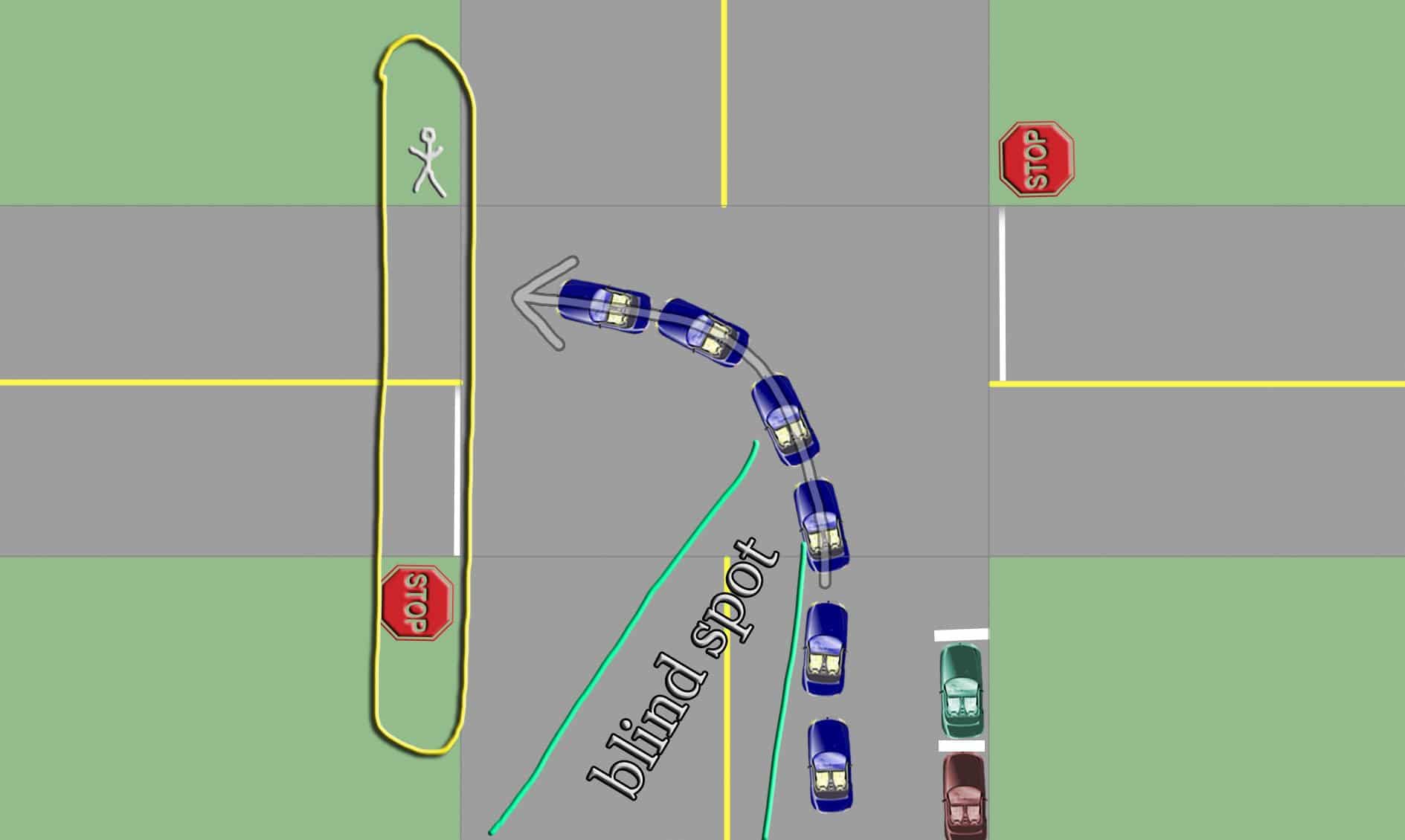
You may decide to do a left shoulder check in certain cases when an intersection may be on a different angle or where you think there may be pedestrians in your blind spot.
*It never hurts to do a left shoulder check before turning. There have been collisions where one vehicle attempts a left turn at the same time as the vehicle behind it attempts to pass it.
Can these types of collisions be prevented by more attentive mirror-checking, or is a left-shoulder check always essential?
Personally I hardly ever do a left shoulder check before doing a left turn, and I hardly ever see other drivers do one either. But, maybe I’m driving in suburbia where it’s a bit more chill compared to downtown Vancouver.
I think that maintaining a 360-degree awareness of what’s going on around us at all times is one of the best ways to prevent those types (and other types) of collisions.
Question about right turns without stop signs: What is the proper procedure for right turns without stop signs?
You’ve come to the right place to learn about right turns without stop signs. Yes, it’s a real thing. Usually, if you’re turning right and you do not have a stop sign (or red light), then it means:
- You’re turning right into a driveway, parking lot, or lane (alley).
- Driving along and you’re about to turn right at an uncontrolled intersection.
- You’re turning right at a 2-way stop intersection where you’re on the “thru” street
Right Turns Without Stop Signs: 2-Way Stops
If you’re turning right at a 2-way stop intersection like the one pictured below, then technically you need to yield only to pedestrians.
Of course, yield to any vehicle that is not lawfully occupying the space. i.e. a vehicle that fails to yield to you.
You should know that the drivers in the other cars and all other traffic are supposed to yield to you. Any car facing a stop sign, and any oncoming car (the one facing you) that may be planning to turn left.
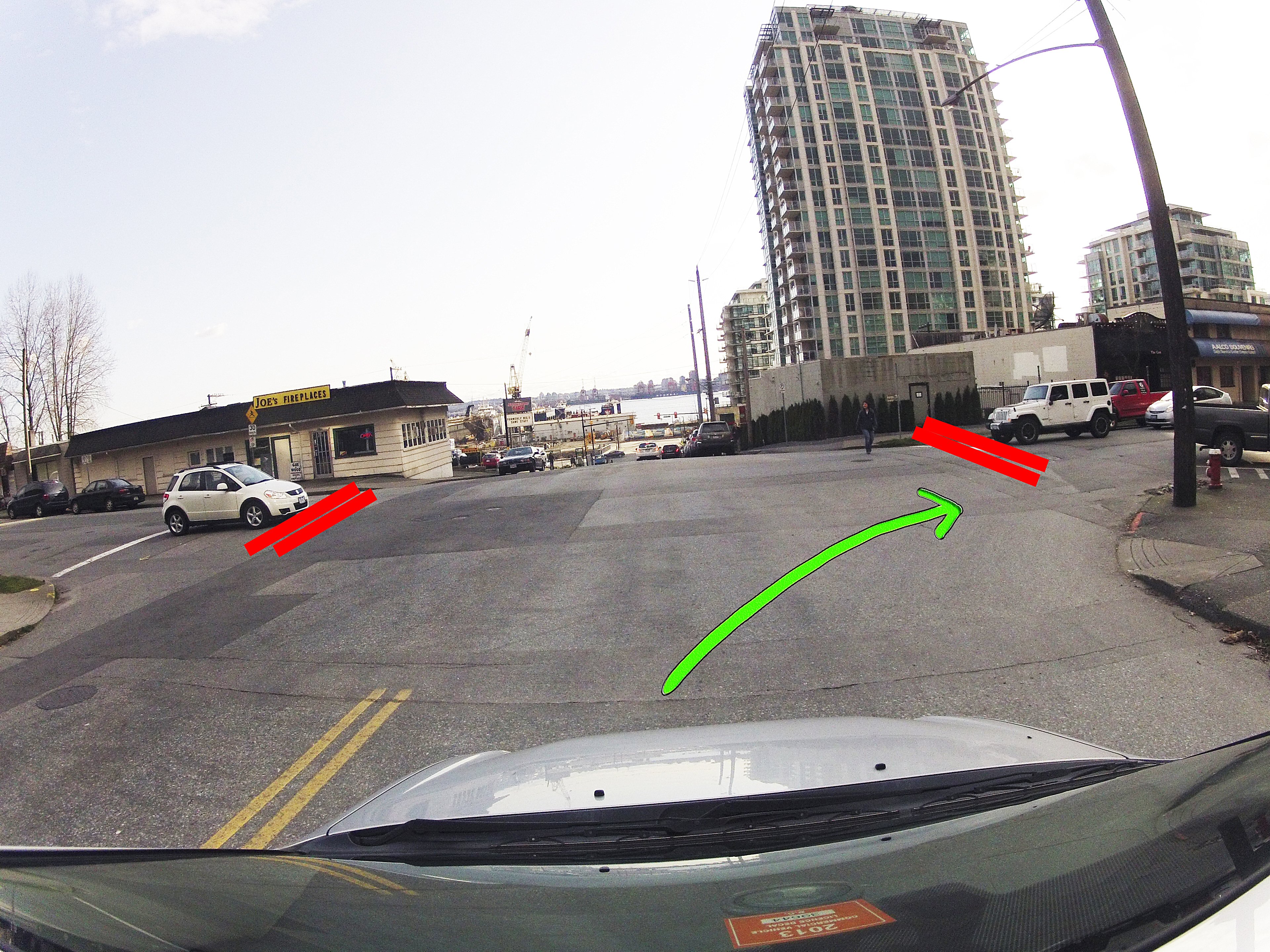
Normally for a turn like this, there are four common situations
Right turns without stop signs
- There are no vehicles (or any vehicles at the intersection are clearly yielding) and there are no pedestrians anywhere.
- Again, there are no vehicles (or any vehicle at the intersection is clearly yielding) but there are pedestrians walking across the street you want to turn right onto.
- There are no vehicles (or any vehicle at the intersection is clearly yielding), but there are pedestrians wanting to walk across the street in front of you.
- Vehicles that are supposed to yield, aren’t. In this case, honk and/or slow down and/or stop to prevent the collision if necessary.
Always watch out for others. There are rules, but, what actually happens may be different. “Expect the unexpected”
Let’s go through these situations one at a time
1) If there are no vehicles (or vehicles are clearly yielding to you as they should) and there are no pedestrians anywhere, then normally you:
- Scan the intersection (well in advance if possible)
- Slow down to about 20 km/hr
- Do a right mirror check and shoulder check to make sure there are no pedestrians or cyclists
- Move your vehicle over towards the right curb if possible
- And then simply turn (Look where you want to go).
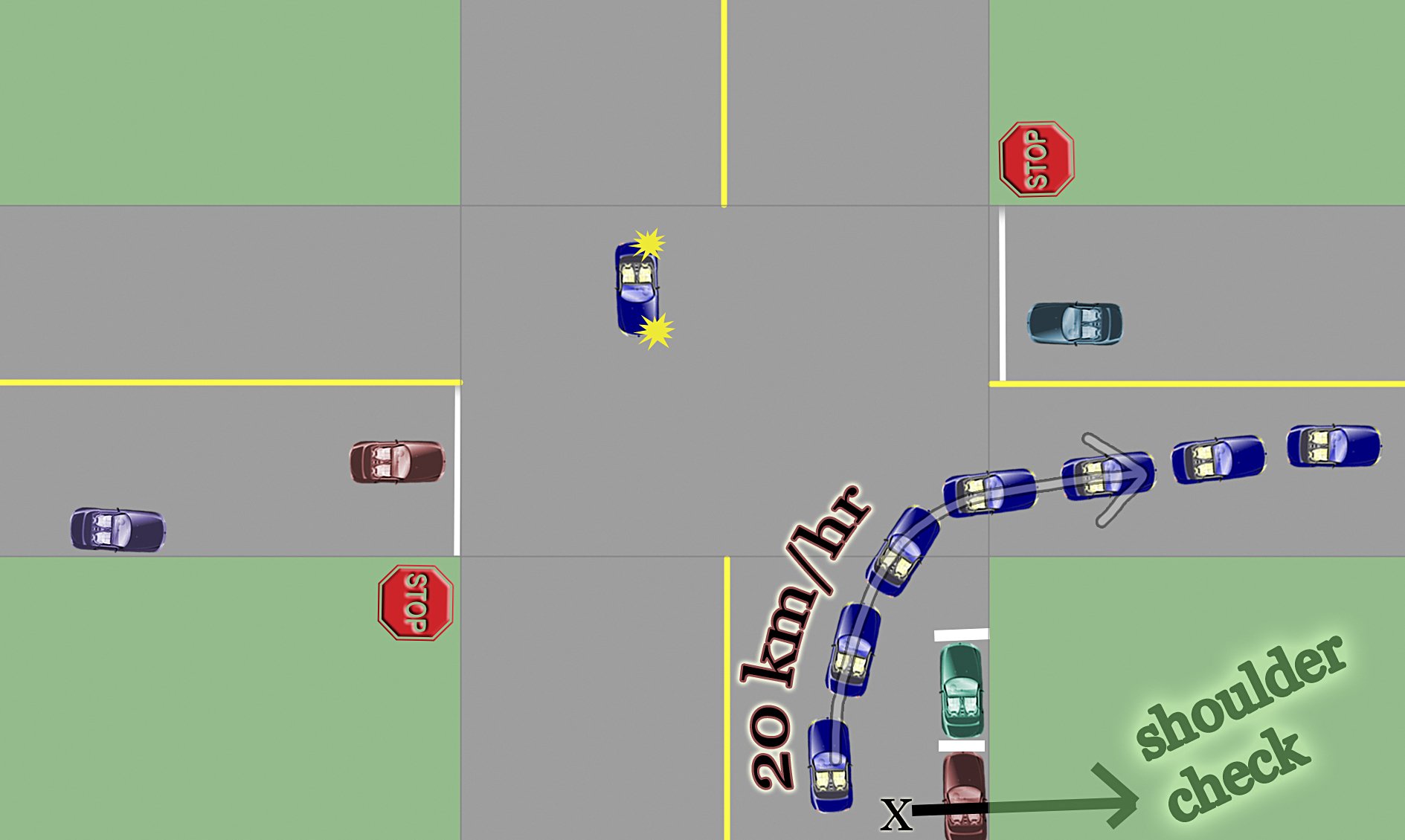
2) If there are no vehicles (or any vehicle at the intersection is clearly yielding) but there are pedestrians walking across the street you want to turn right onto:
- Shoulder check and move your vehicle out of the way of the traffic behind you when possible
- Move into the intersection while waiting for the pedestrian(s). This lets other drivers know you are getting ready to turn and avoids confusion
- Wait patiently for the pedestrians
- Shoulder check again to make sure there are no more pedestrians
- Then, simply turn – look where you want to go.
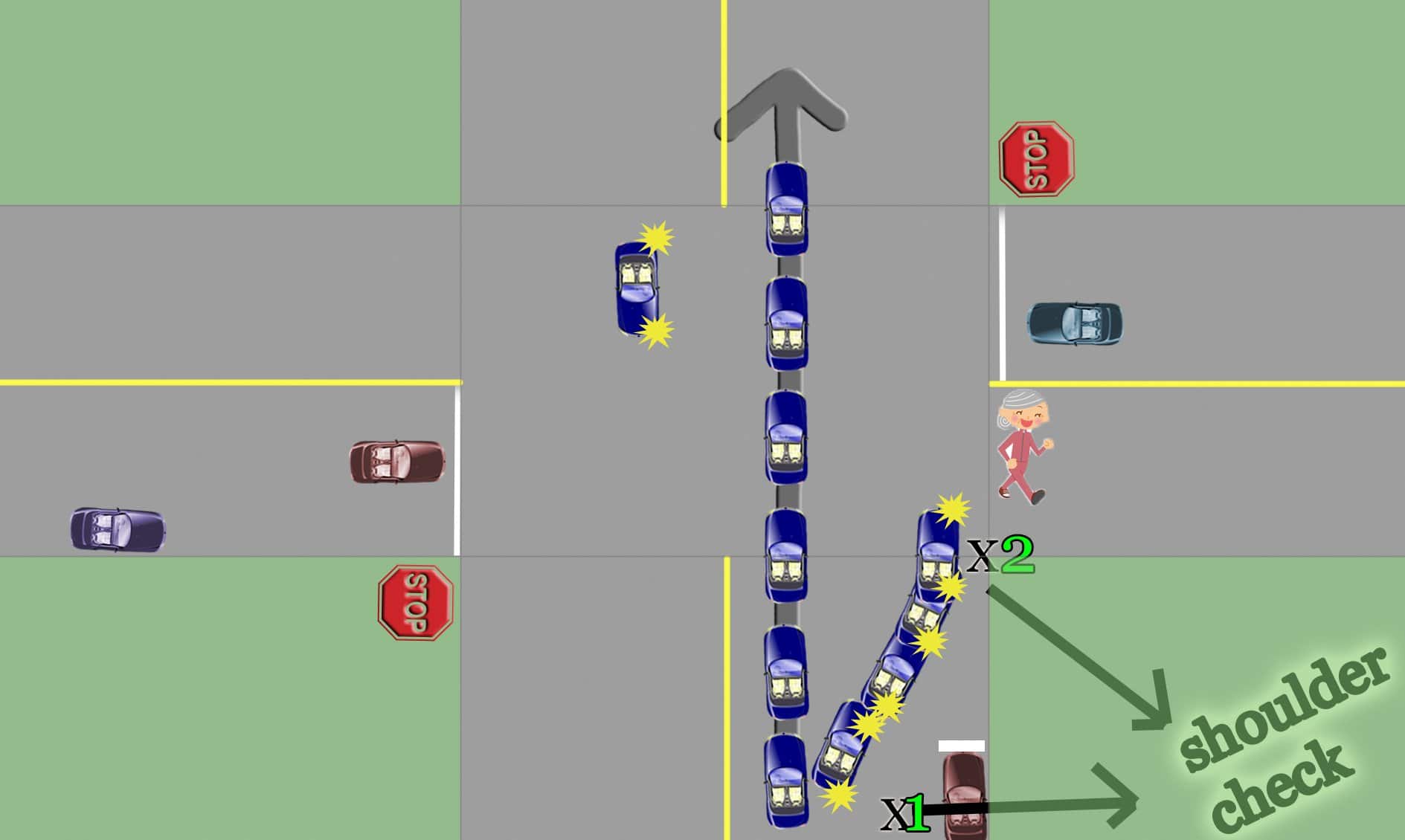
3) If there are no vehicles (or any vehicle at the intersection is clearly yielding), but there are pedestrians wanting to walk across the street in front of you, then stop clearly before the intersection so that vehicles behind can tell why you’re stopping, and to allow cross traffic to potentially proceed (since you have to stop anyway.) Then, proceed as above.
For turning right into parking lots, driveways, and lanes, it is much the same principles, if not exactly the same as the above. Do not stop if there is no reason to.
Normally when you’re driving, you are not expected to stop unless you have a good reason to. Good reasons to stop include things like stop signs, yellow lights, pedestrians, cars doing things they shouldn’t, stopping to yield before a left turn, etc.
If drivers habitually stop in the above situations before turning right, they will not pass the ICBC road test. This is because there is a danger of being rear-ended. In addition, other drivers may become confused if you stop.
After all, the right turn should go first in these circumstances. When people are confused, accidents can happen.
In certain cases, you may have to proceed very slowly due to bad visibility or tight quarters, but normally on these types of right turns, if there are no pedestrians, you would just slow to 20 km/hr, shoulder check, and then just turn.
Conclusion
Blind spots can seem somewhat freaky to new drivers. But they aren’t that bad. You just need to learn exactly where they are, and how big they are, for each individual vehicle that you drive. Then, you can practice the proper shoulder-checking technique, and make sure you know when to shoulder-check.
Entire vehicles can ‘hide’ in your blind spot. This is just a normal part of driving. As a new driver, it’s important to learn about proper mirror use. That, together with strategically-timed shoulder checks can ensure your safety while driving. Preparing for your ICBC road test? Be sure to check out my epic article: ICBC Road Test Tips For Classes 5 & 7 [Instructor Gets Deep].
Read more on our blog:

A woman was driving across the white lines in a parking lot not bothering to use the lane that was…